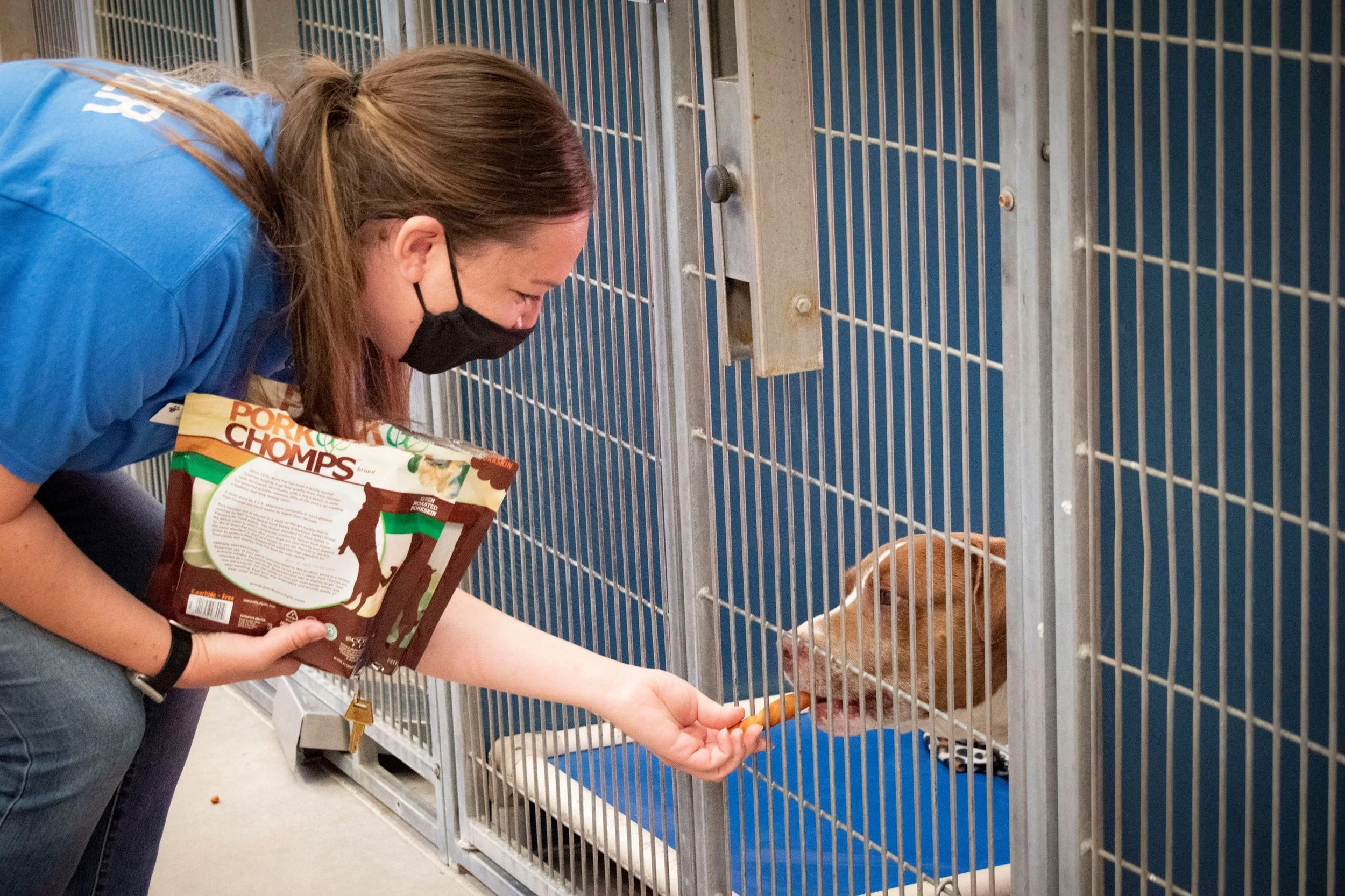Animal Shelter Overcrowding: Causes & How to Help
Every year, more than 6.5 million animals find their way into U.S. shelters, and sadly, 1.5 million face euthanasia because there's simply not enough space.
We're diving into the causes and solutions, and real actions that everyone can take to make a difference.
The overpopulation crisis is caused by a combination of factors, including a lack of spaying and neutering, irresponsible pet ownership, and unethical breeders. This crisis has significant consequences, not just for the animals but also for the shelters and the wider community.
Causes of Animal Shelter Overcrowding:
Lack of Spaying and Neutering
According to a comprehensive study conducted by the American Pet Products Association (APPA), only about 10% of the stray animals entering shelters have been spayed or neutered. This alarming statistic underscores the widespread lack of these essential procedures, contributing to the exponential growth of unplanned litters.
The Humane Society of the United States reports that an unspayed female cat, her mate, and their offspring can produce an astonishing 420,000 kittens in just seven years. Similarly, an unspayed female dog and her offspring can result in a staggering 67,000 puppies in the same time frame.
The reasons behind the low rates of spaying and neutering are diverse. Financial constraints often hinder individuals from accessing affordable veterinary services.
Backyard breeding, where individuals breed animals without proper knowledge or ethical considerations, also exacerbates the problem. Puppy mills, notorious for prioritizing profit over the well-being of animals, contribute to the surplus of puppies entering shelters.
The solution to the lack of spaying and neutering lies in widespread education and accessible resources. Initiatives that provide affordable or free spay/neuter services can significantly impact these numbers.
Irresponsible Pet Ownership
Recent studies by the American Veterinary Medical Association (AVMA) shed light on the prevalence of irresponsible pet ownership. Astonishingly, approximately 6.5 million companion animals enter U.S. shelters each year.
Of these, a significant portion results from owners failing to meet their responsibilities.
The AVMA also reports that only 50% of pets in the United States receive veterinary care each year, indicating a gap in meeting the basic health needs of our furry friends.
Irresponsible pet ownership takes various forms, including neglect, abandonment, and a lack of commitment to spaying or neutering. Failure to address behavioral issues and inadequate training also contribute to pets being surrendered to shelters.
Economic factors, such as job loss or housing instability, often force individuals to make the heart-wrenching decision to surrender their pets. Lack of education on the long-term commitment involved in pet ownership, coupled with impulsive adoptions, compounds the problem.
Breeders' Role in Overpopulation
Approximately 25% of dogs entering shelters are purebred. While not all purebred animals come from irresponsible breeding, this statistic points to a concerning trend. Unregulated breeders, often motivated by profit rather than the welfare of the animals, contribute to the oversaturation of the market with specific breeds.
The American Kennel Club (AKC) estimates that around 3 million dogs are surrendered to shelters each year. While not all of these cases are directly attributed to unethical breeding practices, a notable portion stems from the consequences of poorly managed breeding.
A significant issue within the breeding landscape is the existence of backyard breeders and puppy mills. These operations prioritize quantity over quality, often neglecting the health and well-being of animals. There are around 10,000 puppy mills in the U.S., producing over 2 million puppies each year.
Puppy mills, with overcrowded and unsanitary conditions, contribute to health issues in animals and perpetuate the cycle of overpopulation as their products often end up in shelters.
Unregulated breeding practices exacerbate the challenges faced by animal shelters.
By shifting the demand away from unethical breeding practices, we can work towards a future where animals are bred responsibly, reducing the number of animals in shelters and ensuring better lives for those in need of homes.
How to Help Alleviate Animal Shelter Overcrowding:
Promote Spaying and Neutering
A proactive step in curbing overpopulation is promoting and facilitating widespread spaying and neutering programs. Communities can collaborate with veterinary services to make these procedures more accessible and affordable, thereby reducing the number of unplanned litters.
Educate the Public on Responsible Ownership
Education is paramount in fostering responsible pet ownership. Initiatives should focus on informing the public about the commitment involved in caring for a pet, the importance of training and behavioral management, and the lifelong impact of decisions made when acquiring a pet.
Support Adoption, Not Purchases
Encouraging people to adopt animals from shelters rather than purchasing from breeders helps reduce the demand for animals and contributes to the well-being of animals in need. Adoption events, awareness campaigns, and incentives can be effective tools in promoting adoption.
Volunteerism and Fostering Programs
Communities can actively engage in volunteering at shelters and participating in fostering programs. By volunteering time and resources, individuals can provide crucial support to overwhelmed shelters and contribute to the physical and emotional well-being of animals awaiting adoption.
Donating to animal shelters, volunteering time, and fostering animals are also essential ways to help. Many shelters rely on volunteers and foster families to care for animals and provide them with the love and attention they need until they find their forever homes.
Finally, education is key in tackling the overpopulation crisis. Educating others about the importance of responsible pet ownership, spaying and neutering, and adoption from shelters can help spread awareness and reduce the number of animals in need of care.
Animal shelter overcrowding is a complex issue with far-reaching consequences, but it is not insurmountable. By addressing the root causes, promoting responsible pet ownership, and actively participating in solutions, communities can make a significant impact. The collective effort of individuals, organizations, and policymakers is essential in creating a future where every animal has the opportunity for a safe, loving home.




